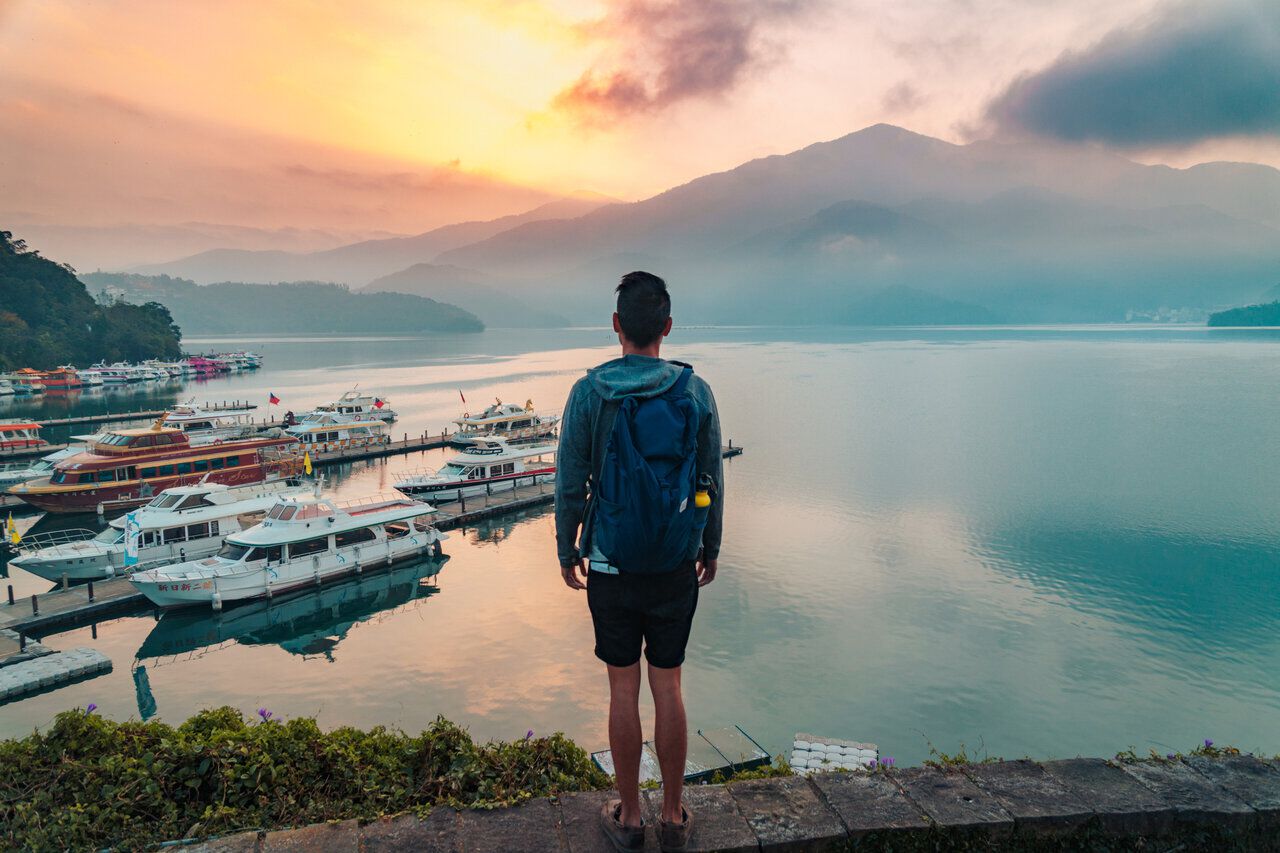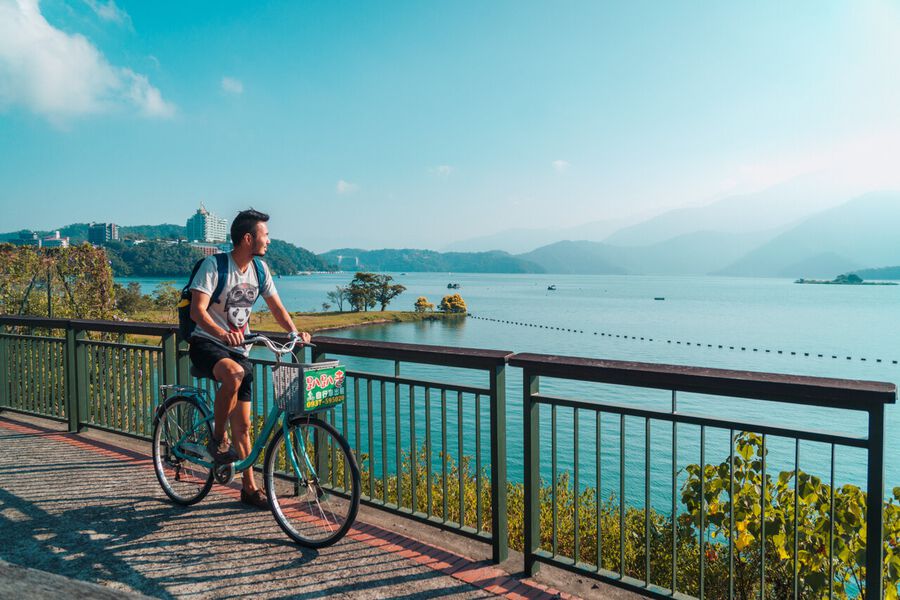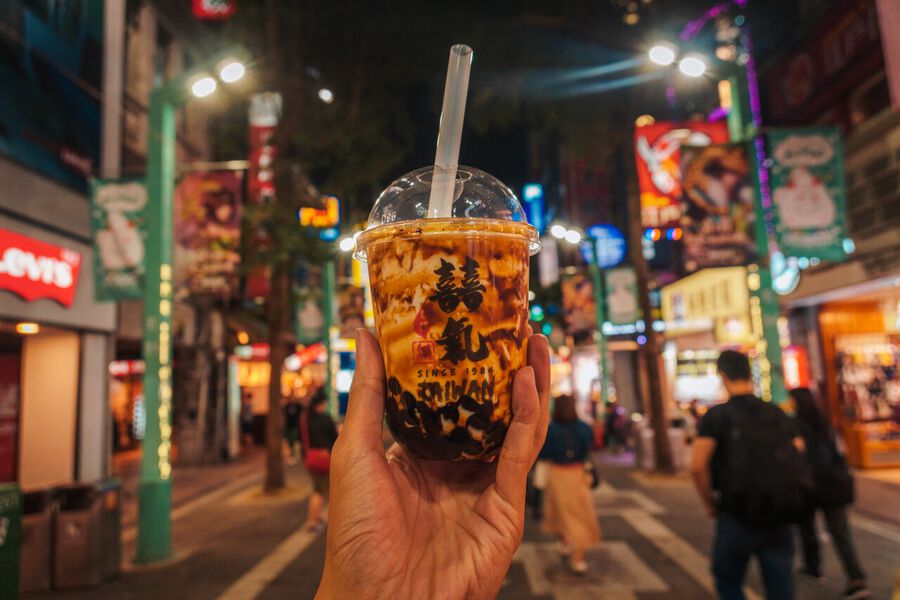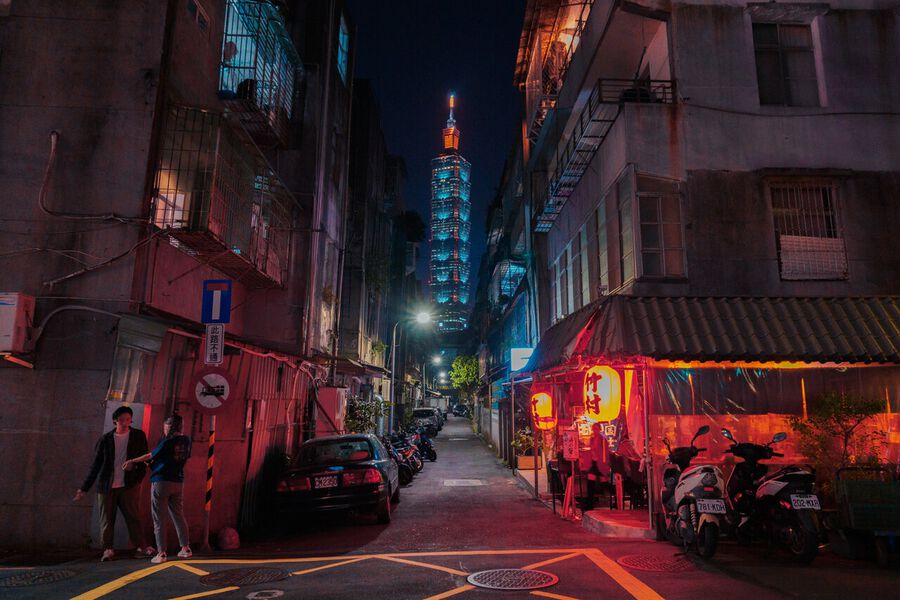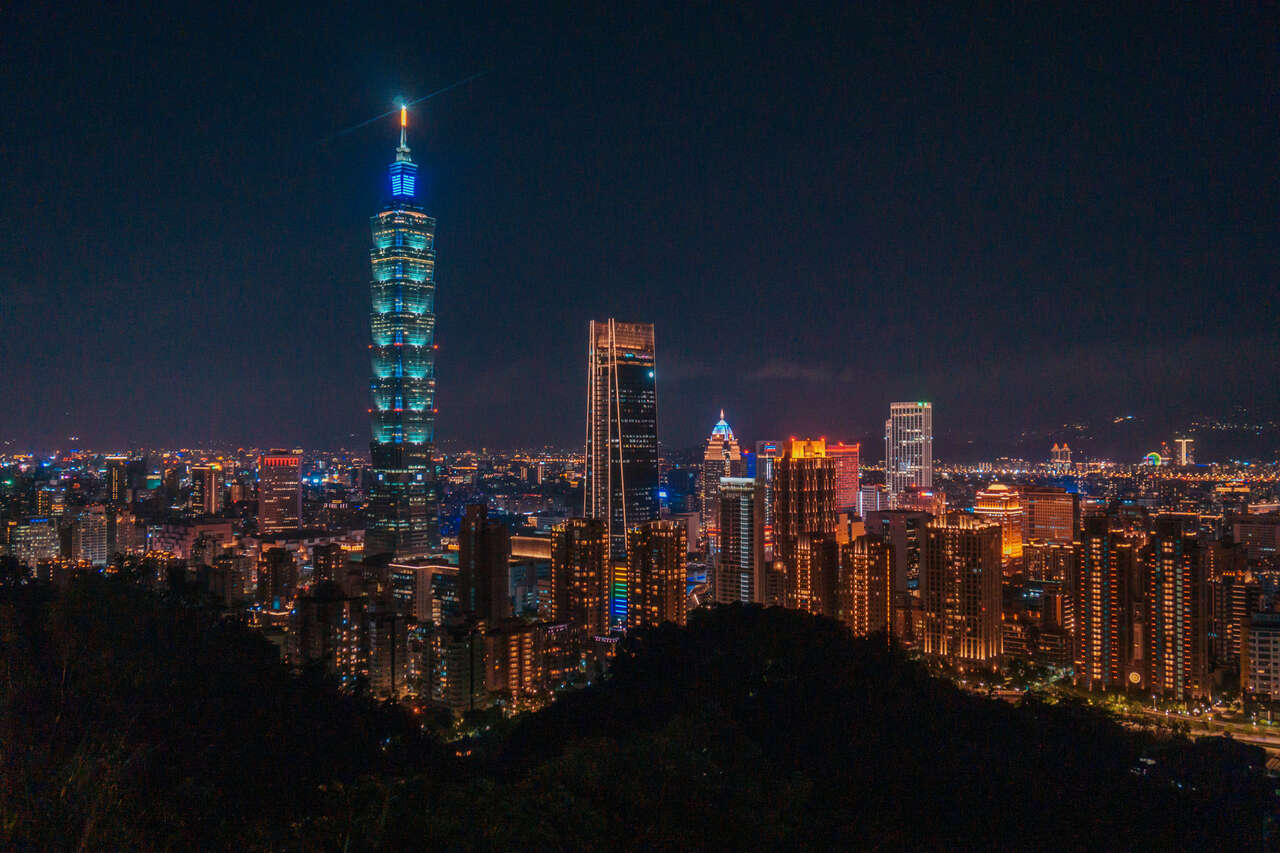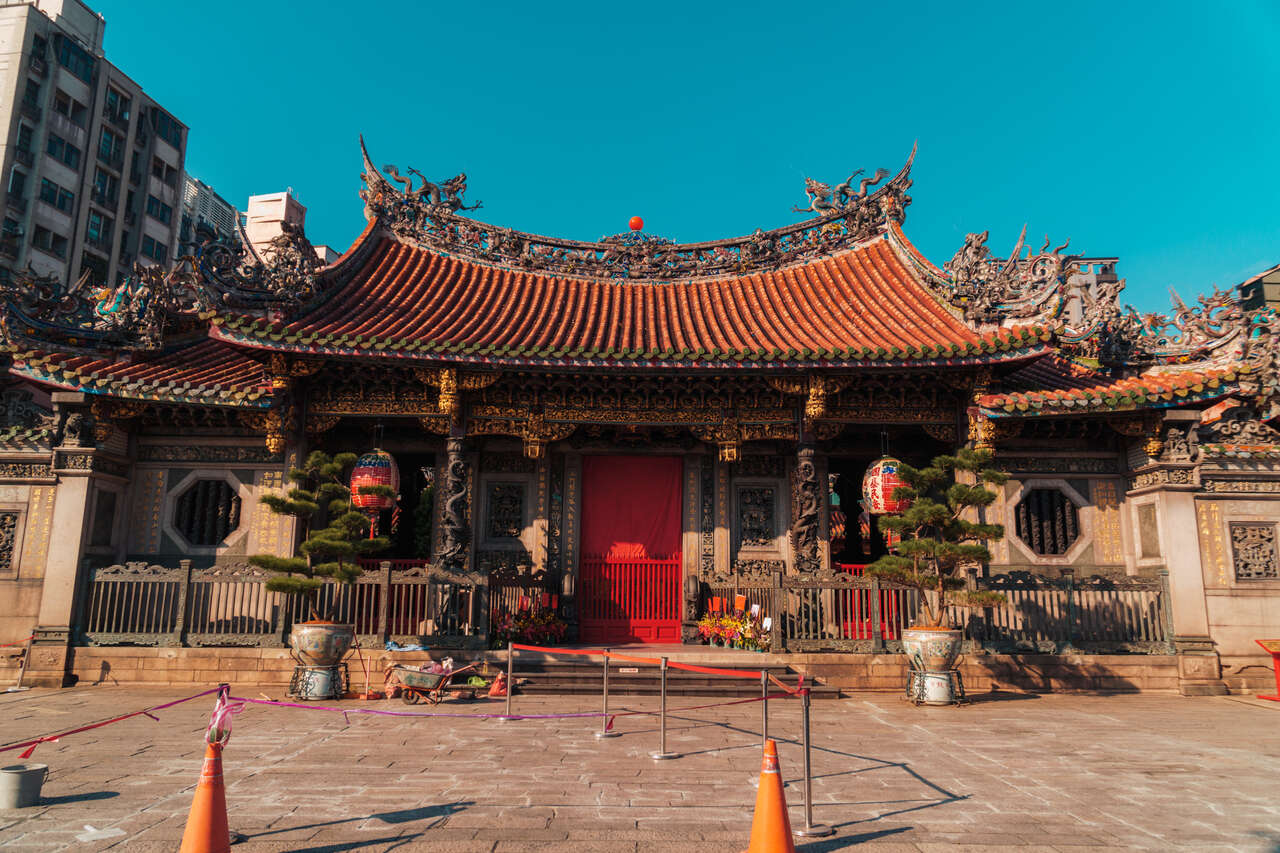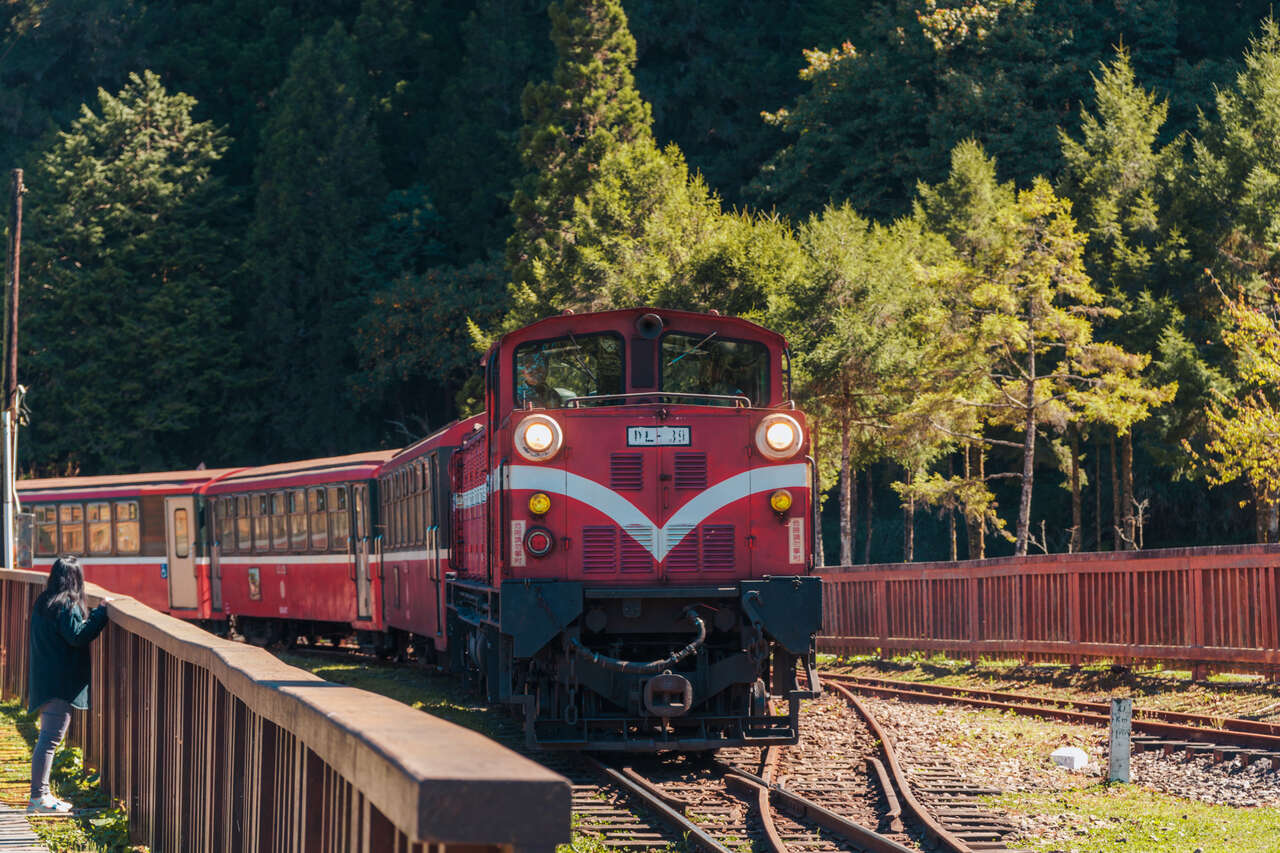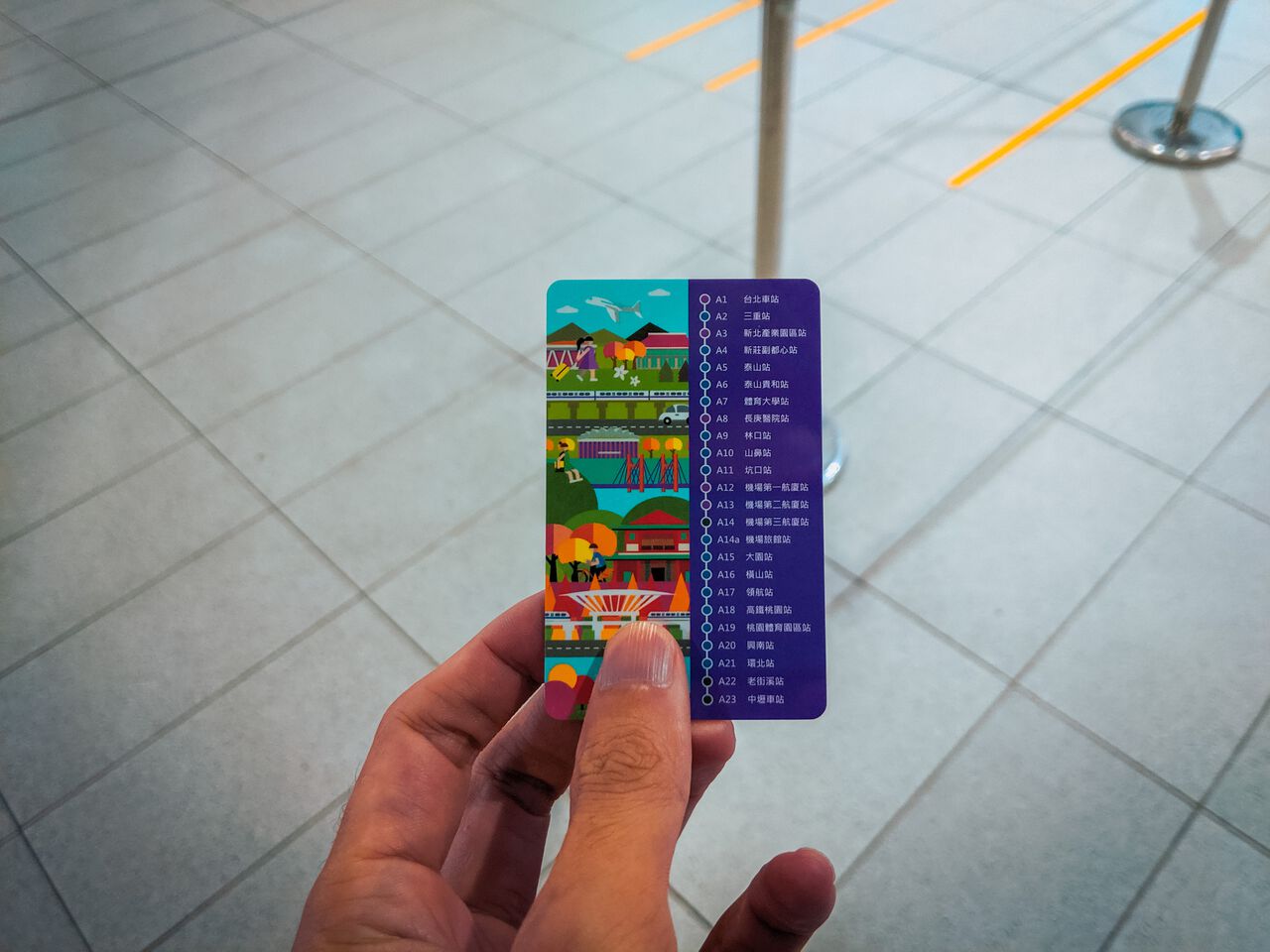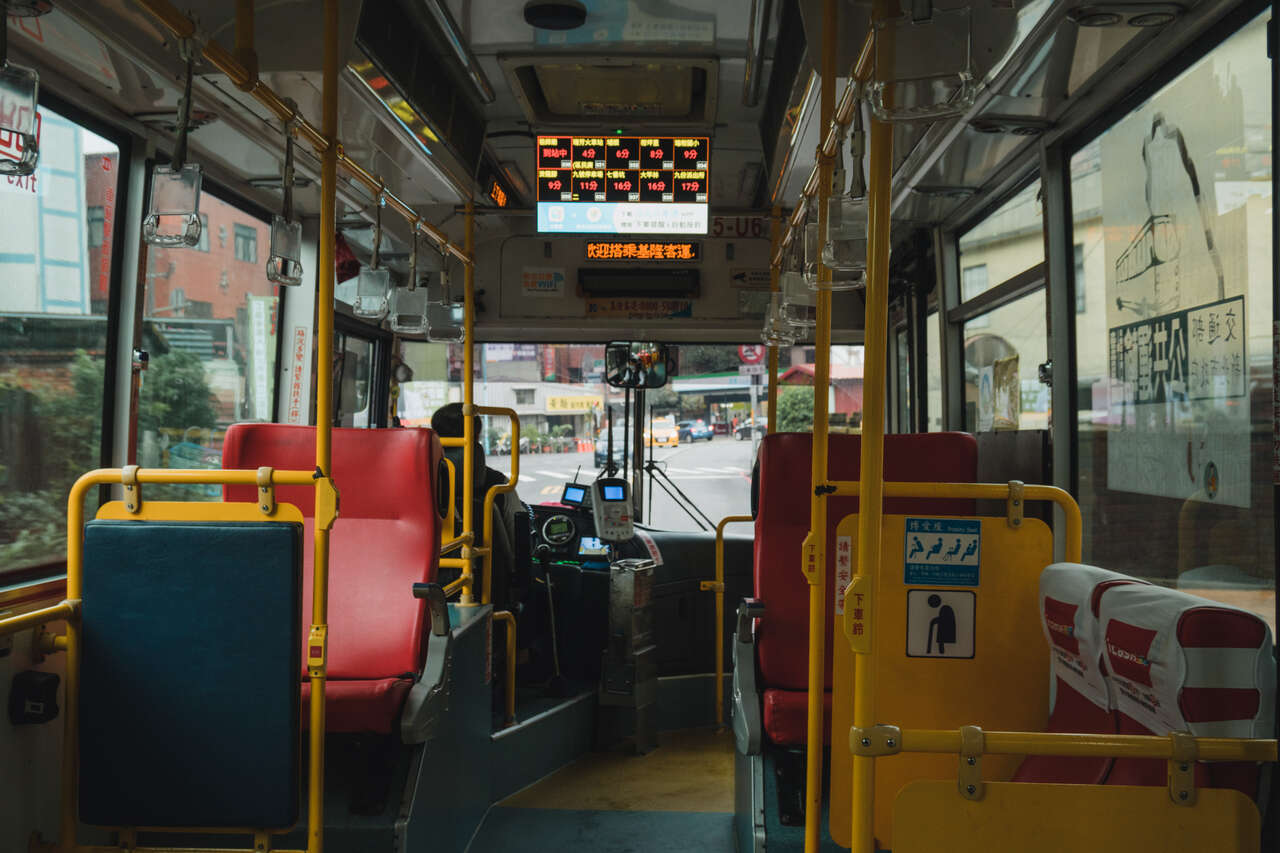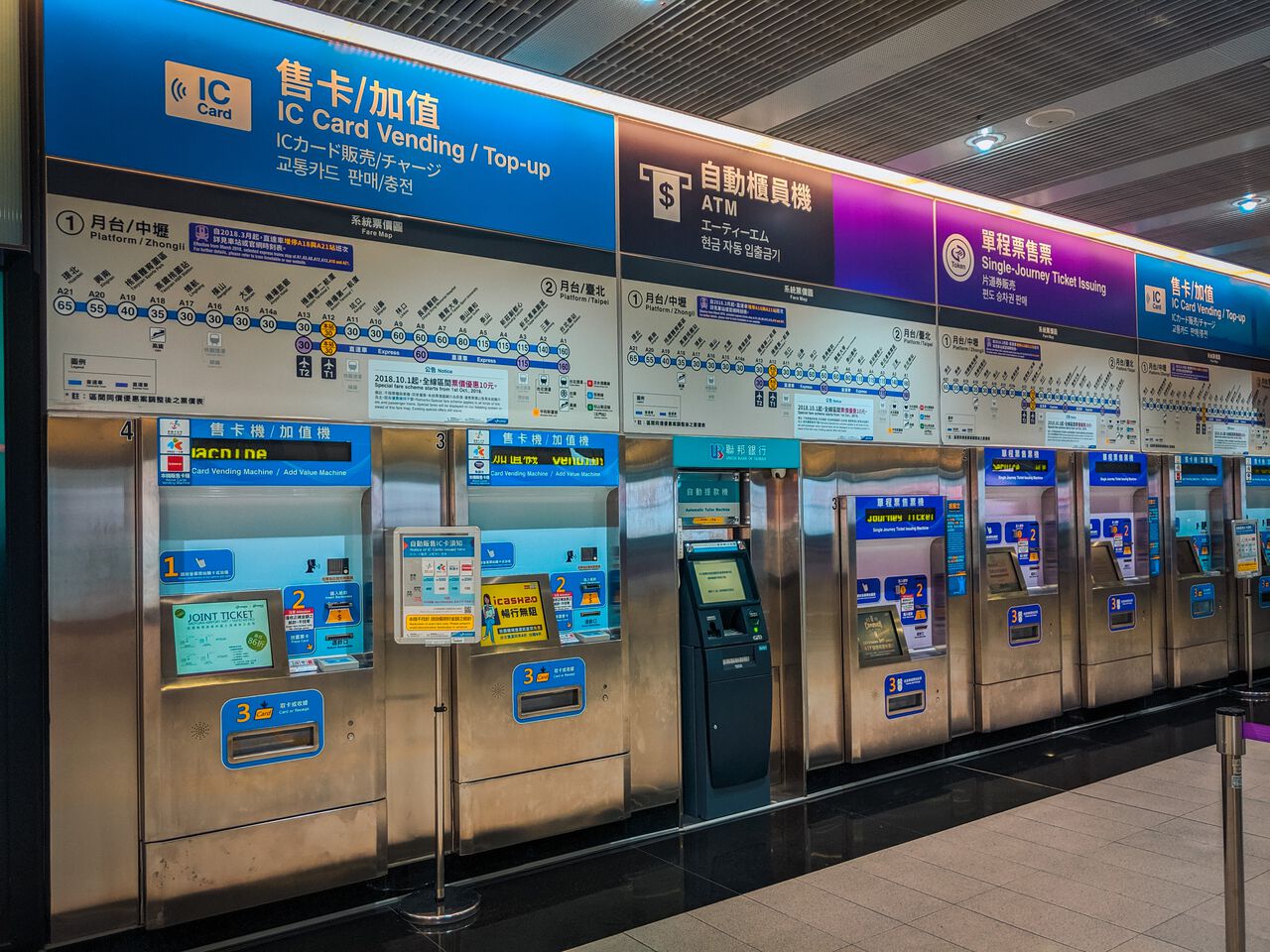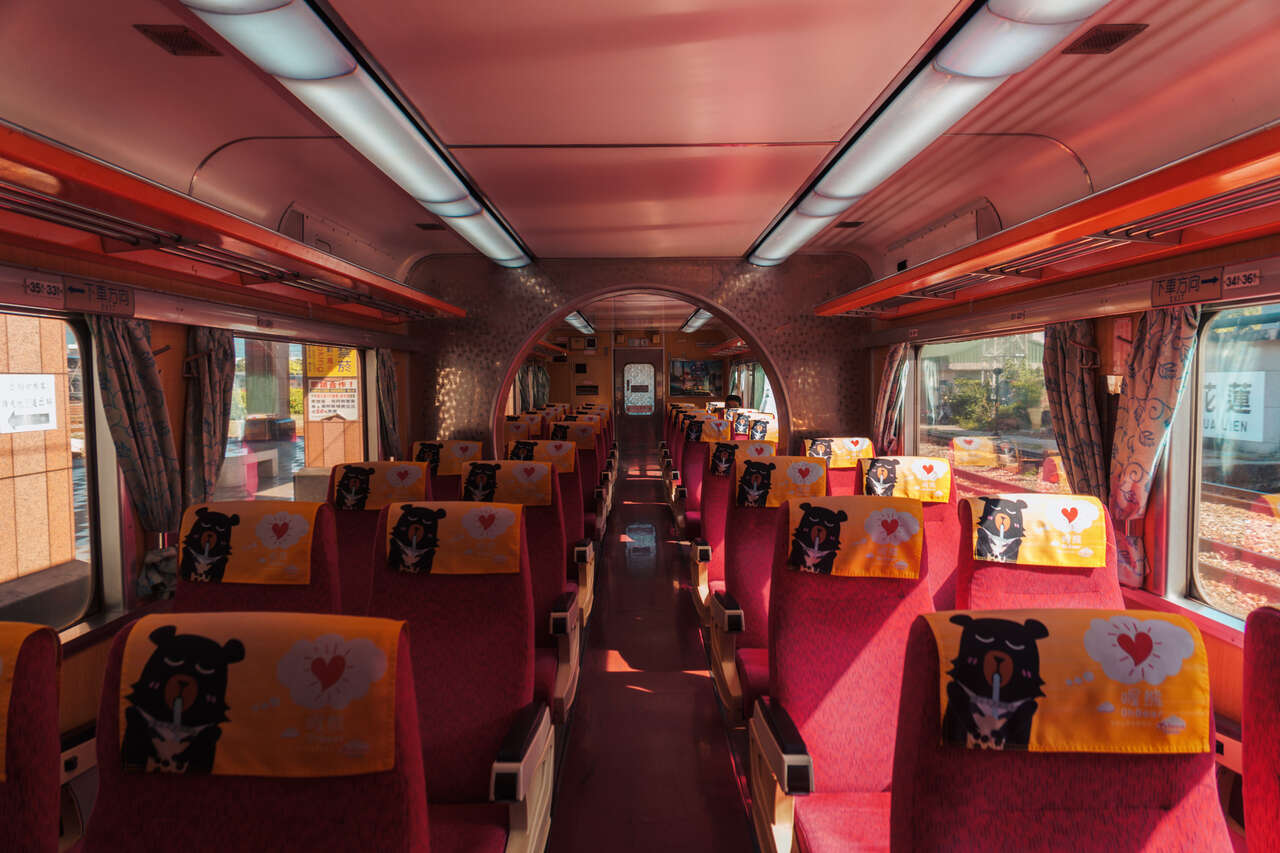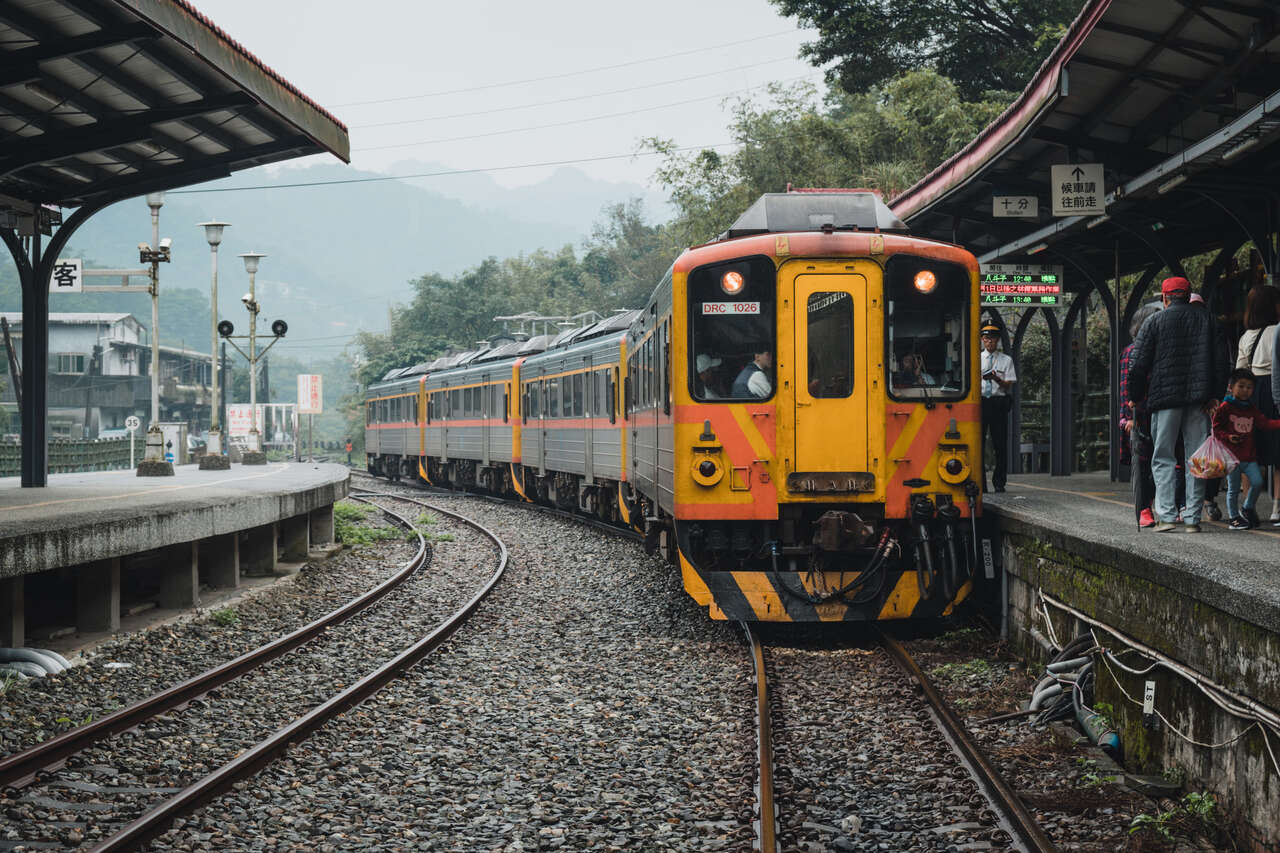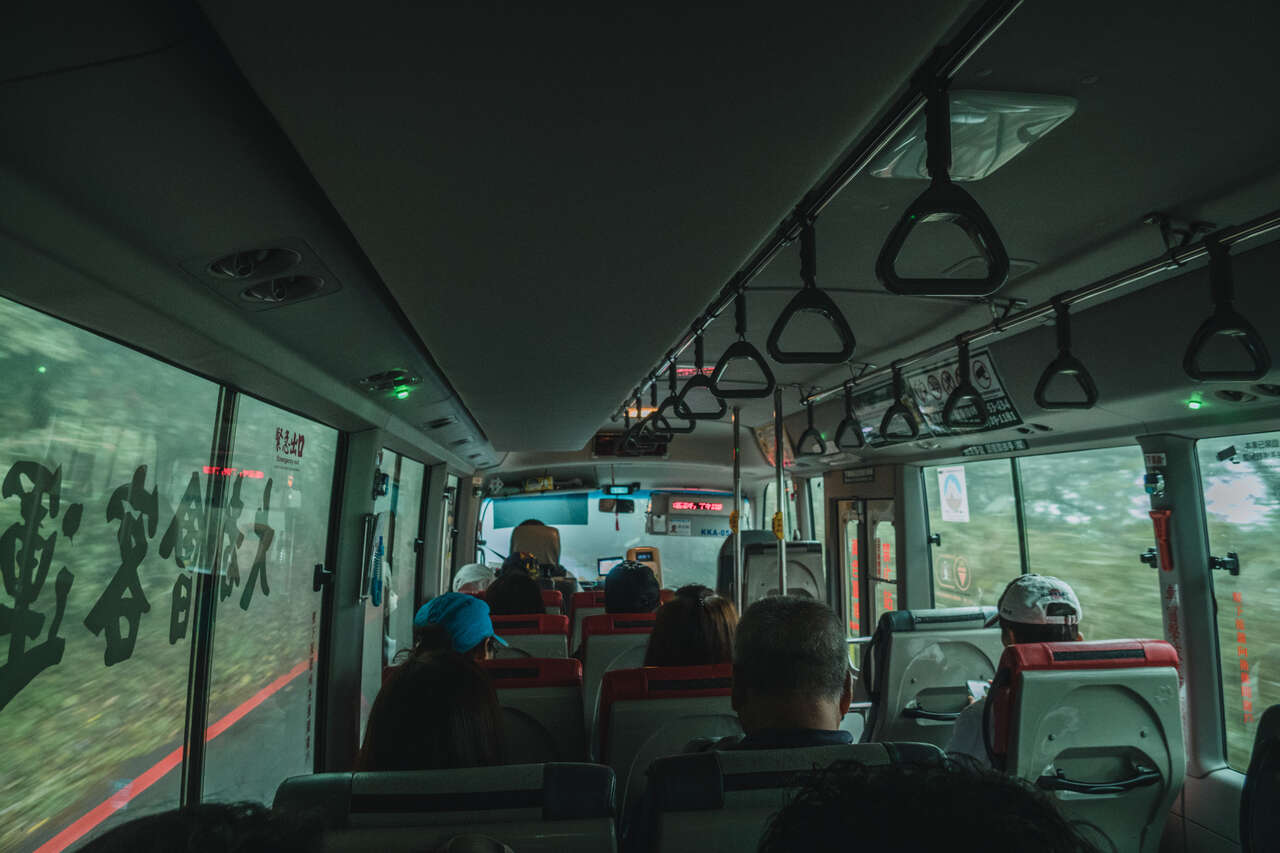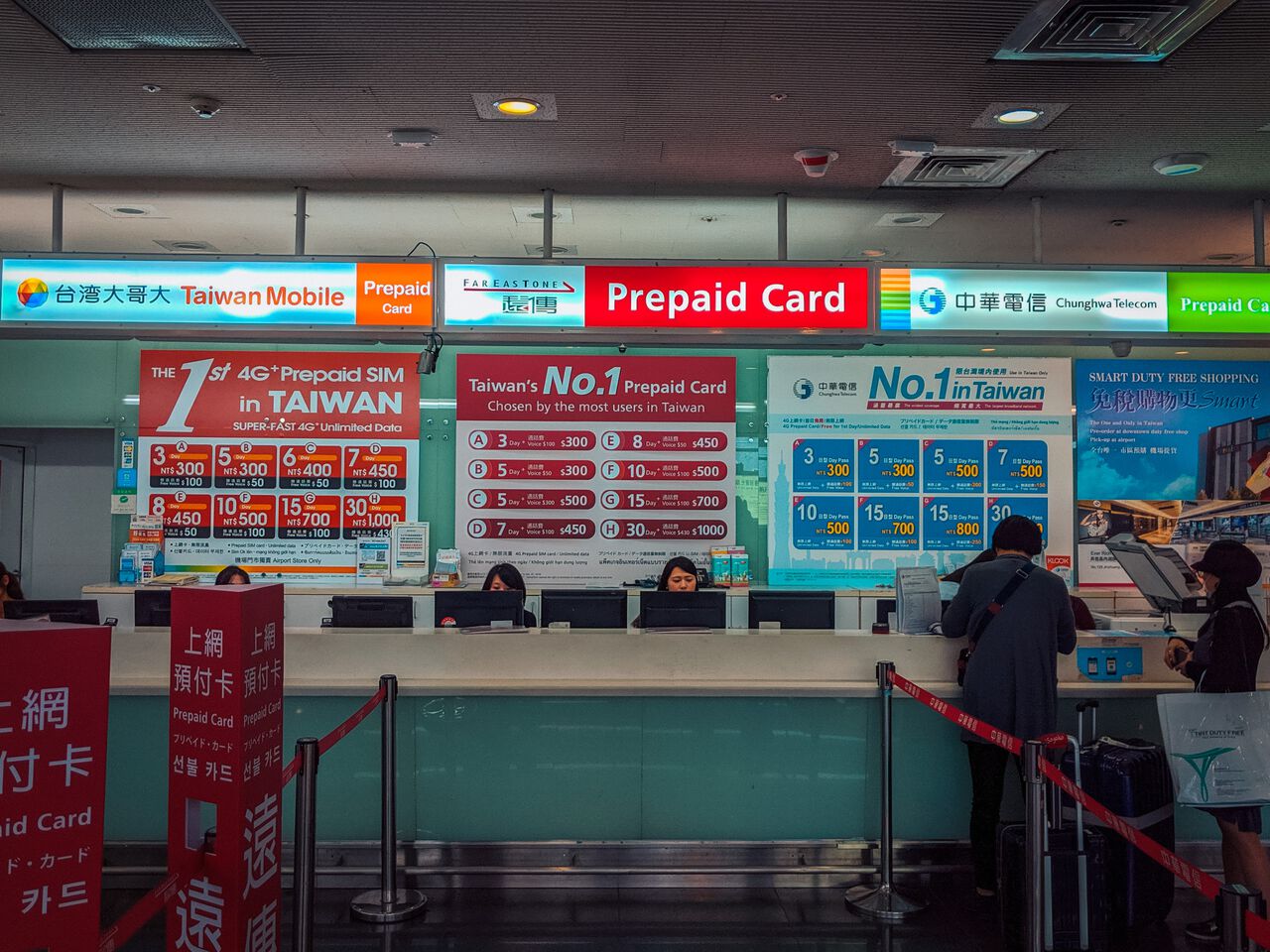When to Visit Taiwan?
The best time to visit Taiwan is from late October to April, when the temperature should hover around 17°C - 24°C in the lowland and a little bit chillier in the mountains. These are the best months to visit because the weather won't be too humid, and you are likely to get less rain during this time, which is a blessing and hard to come by on an island like Taiwan.
Since Taiwan is an island, rainfall is quite common and expected to be unpredictable, even during the recommended timeframe. So, prepare an umbrella or a rain jacket when visiting Taiwan.
Taiwan is also prone to typhoons, and I would highly recommend that you avoid visiting from June to September, as the wind can be extremely violent. These typhoons may cause many tourist attractions to go on lockdown, preventing you from enjoying the outdoor activities that Taiwan is known for.
How to Get to Taiwan?
Most of the flights coming to Taiwan will arrive at Taoyuan International Airport in Taipei, and depending on where you are, there are several airlines you can fly with to Taipei.
From the US, there are several direct flights from big cities like New York and LA via United Airlines. Alternatively, you can also fly directly to Taipei via EVA Airlines, its national carrier.
From within Europe, you can also fly directly via EVA Airlines or popular carriers like KLM or AirFrance to Taipei. You can also fly via Asian airlines like Singapore Airlines or Thai Airways, but you will have to transit in their respective home countries.
From Asia, traveling to Taiwan becomes a lot easier and cheaper with several low-cost airlines operating this route from hub cities like Bangkok and Singapore. Lion Air, as well as AirAsia, have many flights flying from Bangkok/KL to Taipei every day, so you should have no problem finding one if you are planning to fly from Asia.
To find a cheap flight to Taipei, I would recommend you use Skyscanner or Expedia to look for the cheapest route and schedule so you can compare and choose the best one.
How to Get from Taipei Airport to the City Center?
From Taoyuan International Airport, there are two ways you can travel to the city: by bus and by the Metro. The easiest option is to take bus #1819 from outside the Airport Terminal 2, which will take you to Taipei Main Station.
By Bus
Bus #1819 runs 24 hours, operating every 15-20 minutes during the day and once every hour in the early mornings (2 AM - 5 AM). The ticket can be purchased at the ticket kiosk before exiting Terminal 2.
Simply follow the "Bus to City" sign until you find a line of ticket kiosks where you can then buy the ticket. The ticket should cost you around 125 NTD, and the journey from the airport to Taipei Main Station should take around an hour.
You can find an updated bus timetable for bus #1819 on their official website here: Bus #1819 Timetable.
By MRT
You can also take the MRT (Taipei's metro system) to the city via the MRT's purple line, straight to Taipei Main Station. However, it is often longer and a little less convenient, especially if you have a lot of luggage.
The journey should take about 1.5 hours, and it should cost you around 160 NTD. The last Express train and commuter train bound for Taipei Main Station are at 22:58 and 23:27, respectively.
I highly recommend that you buy an EasyCard at the airport and use it to travel by metro or bus instead of buying individual tickets, as it will be more convenient for you in the long run. Read more about the EasyCard under the "Traveling Around Taipei with EasyCard" section below.
How to Get Around Taiwan?
Taiwan is probably one of the easiest countries to travel around. With the widely accepted IC card called EasyCard, you can get on a bus or a train with one simple gesture, and that's it. To understand how you can travel around Taiwan, first, you need to understand what EasyCard (or other IC card) is and how it will benefit your travel.
Getting Around Taiwan with EasyCard
One of the best things about Taiwan is how easy it is to travel around the country, thanks to the adoption of the IC (Integrated Circuit) card. This card makes getting around Taipei, as well as the rest of the country, such a breeze. Here's how it works:
EasyCard is a universal IC money card that can be used to pay for everything from buses to trains to groceries all over Taiwan. It makes traveling in Taiwan a whole lot easier for those of us who don't know Mandarin. I was able to travel the entire island on buses, trains, and metros just by using the EasyCard.
To travel around Taiwan with EasyCard, all you have to do is simply tap on the card reader machine when you get on and tap once again when you get off, and that's it. You have already paid for your transportation!
You can buy the EasyCard from the airport, any of the MRT stations in Taipei, or from any of the 7-11 or Family Mart convenience stores around the country.
The card should cost around 100 NTD, and you can then top up the card with more money from the ticket machines in all the MRT Metro Stations in Taipei or at 7-11 and Family Mart.
The amount of value deducted from the card will depend on the distance you have traveled, so be sure to have enough money on your EasyCard before the trip. Otherwise, you might have to buy the ticket directly from the bus driver instead.
Getting Around by Train
Taiwan has 2 train systems: the TRA, which operates regular and express trains, and the THSR, which operates high-speed trains. Generally, the TRA is slower but cheaper, while the THSR is faster but more expensive. Depending on your needs, you can choose whichever one of these trains fits with your schedule.
Both trains work in a similar fashion. With EasyCard, all you have to do is go to a train station, swipe the card over the card reader to gain access to the platform, take the train, and swipe again at your destination to exit the platform. It's that easy!
Keep in mind, though, that you won't be able to book seats with this method, so you will have to risk it or stand. I would recommend using EasyCard for shorter trips, such as going to Jiufen from Taipei, etc.
For longer trips, I would recommend you book a train ticket through their mobile applications. Keep in mind that the THSR and TRA often have their own train stations, so be sure you are arriving at the right one.
For TRA, you can download the app from Apple Store/Google Play and you can buy a ticket with a credit card. The app can be switched to English, but some notifications are often in Chinese. Therefore, you would either have to translate them one by one or ignore them, which oftentimes works.
Once you have bought a ticket from the app, you will also have to collect it through the app within 2 days (including the booking date) before it gets automatically canceled. If you book on the day you are traveling, you have to collect it 30 minutes before the departure time.
One phone can collect one ticket, so if you bought 2, make sure that the other party has the app and collects the ticket individually, so you can use your phone to enter the platform.
Once you collect your ticket, all you have to do is open the ticket with the QR code and let the machine scan the QR code to enter the platform, similar to how EasyCard works. You have to do the same on your way out as well.
For more information on schedules and booking, be sure to visit The Official TRA Booking Website.
For THSR, it is pretty much the same as TRA with the app. You must first download the THSR app on Apple Store/Google Play, and from there, you can buy tickets with your credit card. Click "Collect & Distribute" to collect your tickets, and then you can use the ticket with the QR code on your phone to get access to the platform.
For more information on schedules and booking, be sure to visit The Official THSR Booking Website or you can book it through 12GO.com.
You can pretty much reach almost everywhere in this itinerary by train, but sometimes, you are better off taking a direct bus instead.
Getting Around by Bus
Buses are a great way to get around Taiwan, especially when going from a city to a nature spot like Alishan and Taroko Gorge, where train access is limited. Buses are also a great way to navigate cities like Taipei, Hualien, and Chiayi, especially when it comes to reaching places where the MRT doesn't go.
With EasyCard, all you have to do is get on the right bus, tap the card reader when you enter, and once again when you get off, and the money will be deducted from the card. That's it. If you do not have an EasyCard, you will have to prepare the exact amount in cash as bus drivers often don't have change.
To find the right bus to take, you can use Google Maps and enter the destination you want to visit. The app will suggest which bus number you should take. This works 90% of the time, with 10% showing the correct bus but not all the available options. This could be due to seasonal schedule changes from bus operators.
For more information on schedules and booking for buses, check out: Book Buses in Taiwan.
How Much Money Do I Need For Taiwan?
For a 2-week itinerary as illustrated within this guide, we can calculate the minimum amount of money you can expect to spend in Taiwan. Here is a rough calculation for a 2-week trip in Taiwan:
Accommodation: With a total of 14 nights, you will be paying around 230 USD (6,927 NTD).
Food: A good meal in Taiwan costs about 100 NTD or around 300 NTD per day, so you will pay around 3,041 NTD for 14 days of food in total.
Transportation: You will pay quite a bit for transportation around Taiwan as we will be moving around quite a lot, considering you only have 2 weeks. So, in total, you should pay about 1,902 NTD for transportation.
Activities: Many places in Taiwan are free of charge, so you won't be spending as much on activities. You will likely spend around 270 NTD for activities for this itinerary.
Total Budget for 2 Weeks in Taiwan: 12,140 NTD (403.07 USD)
Is it Safe in Taiwan?
Taiwan is prone to typhoons, and as I wrote earlier, please avoid visiting Taiwan during the typhoon season (June - September). That is when you are likely to encounter rain and thunderstorms, which increase the risk of natural disasters. You would not want to be exploring places like Taroko Gorge when that happens.
Other than that, Taiwan is probably one of the safest countries I've been to so far. You are unlikely to encounter any scammers, catcallers, or pickpockets in any of the cities you are visiting in Taiwan. That said, it is best that you exercise precautions like keeping your belongings with you, just as you would when visiting any other big cities.
Which tourist SIM card is best for Taiwan?
Taiwan has one of the fastest public WIFI networks out there. Most of the hostels and restaurants I visited in Taiwan had fast, reliable WIFI, so you could get by without having a local sim card. However, if you wish to navigate the city by bus, I recommend getting a local sim card at the airport upon your arrival.
I recommend Chungwa Telecom, one of the leading telecommunication carriers in Taiwan, which offers several 4G unlimited unthrottled data packages with a price range from 300 NTD - 1,000 NTD.
You can find their kiosk among other carriers at the arrival hall at Taoyuan International Airport in Taipei. Simply approach them, and they will show you the list of packages available that you can choose from. They will ask for your passport, pop the SIM card in for you, and within 2 minutes, you will have unlimited 4G data for your Taiwan trip.
I had 15 days in Taiwan, so I bought their 15-day unlimited data sim card for 700 NTD (they also accept credit cards). I was able to get a 4G connection everywhere I went in the country. If you are looking for a reliable way to stay connected throughout your stay in Taiwan, be sure to get a local sim card at the airport.
For more information about Taiwan's local SIM card: Taiwan Prepaid Data SIM Card.
Tips: To stay connected with your loved ones at home, make sure to have a VPN service like NordVPN installed before traveling, so that you can bypass any local Internet censorship you might encounter while in Taiwan.
What to Pack for Taiwan?
As you may already know, I am an advocate of light traveling, and indeed, packing light for a journey like this is a unique art form. Here are some packing tips for your upcoming trip to Taiwan:
- Walking/Hiking Shoes: With all the walking and possible hiking during your travel, a comfortable pair of shoes is a must. I recommend the Timberland 3-Eye Classic Boat Shoes that are my go-to pair for long strolls and hikes.
- Breathable Shirts: Given the potential for hot weather, pack a few breathable shirts for your outdoor adventures.
- Shorts/Jeans: Anticipate lots of walking during your travels? Be sure to pack some breathable shorts and a pair of Levi's jeans for when the weather cools. For women, leggings are excellent for both hot and cold climates, so consider packing some as well.
- Fleece Jacket: For colder weather, layering is the key, and a fleece jacket makes an excellent insulating layer. I recommend the Columbia Steens Mountain Fleece (for women).
- Outer Shell Jacket: An outer shell jacket is great for windy or rainy conditions. I highly recommend the Columbia Watertight Jacket (for women). It's lightweight, breathable, and even comes in a cool orange color.
- Microfiber Towel: A Microfiber towel is the ideal backpacker's towel due to its lightness, quick drying, and compressibility.
- Camera: You should also pack a good camera for your trip so that you can capture all the beautiful experiences you might have. I recommend the Sony a7R V camera together with the Sony 24-70mm f2.8 GM II lens, which is probably the highest-performance camera and lens combination you can get right now.
- Power Bank: Keep your electronics charged on the go with a 20,000+ mAh Power Bank.
- Water Bottle: The Hydro Flask Trail Water Bottle is a great insulated water bottle to have with you in cities or on hiking trails. It is lightweight and can keep your water cold or warm for more than 12 hours. It's a total game-changer.
- Universal Adapter: You'll need just one universal adapter to plug in your electronics in any country you visit.
- Packing Cubes: Packing Cubes will help you save space in your backpack and keep all your belongings organized.
- Daypack: The Langly Alpha Globetrotter is my go-to everyday camera backpack. It's large enough to carry all my travel gear, and it comes with plenty of slots and pouches. Plus, it's stylish as hell!
- Large Backpack: You will need a large backpack to carry all of your stuff. I recommend the Osprey Atmos AG 65L backpack. With excellent weight distribution and a lifetime guarantee, you can't go wrong with Osprey.
For more information on what I pack in my backpack for this trip, check out: My Packing List: 60 Travel Essentials.

